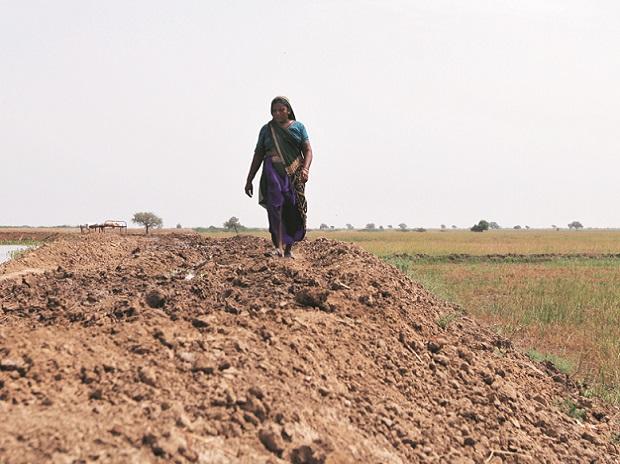[ad_1]
The lowering of the allocation under the Mahatma Gandhi National Rural Employment Guarantee Act (MGNREGA) for FY24 — by almost 18 per cent over the Budget Estimate for FY23 and nearly 33 per cent over the Revised Estimate for the same fiscal year — hinges on two assumptions.
One, according to senior government officials, is that as economic activities gather strength, demand will come down. Second, being a demand-driven scheme, the allocation can be stepped up during the year, as regularly done in the past. The officials, according to published reports, also argue the extra allocation for rural housing (Pradhan Mantri Awas Yojana-Grameen) and the drinking-water programme is expected to wean away significant chunks of manual casual labour from the scheme because the catchment area for these is almost identical.
But civil-society activists and people working on the field argue that slashing the MGNREGA budget will lead to delays in wage payments, suppression in work demand, and lack of quality assets getting created. “Instead of adequately funding the programme, the government has repeatedly resorted to needless technical tinkering,” said a statement by the People’s Action for Employment Guarantee and MGNREGA Sangharsh Morcha.
They also argue that reducing the MGNREGA’s allocation and raising the budgetary outlay for rural housing and the Jal Jeevan Mission show the government’s intent to weaken legislation that empowers workers, and promotes schemes that leave citizens at the mercy of yearly allocations and targets.
A look at the Budget Estimates and expenditure on the scheme shows that over the years (since 2015-16 to be precise) expenditure has always bettered the Budget Estimate and has seldom been lower than that.
But activists say a good chunk of this expenditure has been on clearing past dues.
For FY24, according to them, after accounting for the pending liabilities of FY23, only Rs 50,600 crore will remain for expenditure. “Consequently, only 16.64 days of work per active household can be generated for FY24. If we consider 160 million registered (households), the days will further decrease to just 10 days,” the statement said. World Bank economists have recommended at least 1.7 per cent of GDP must be allocated for the programme. “On the contrary, the allocation for FY24 as a percentage of GDP is around 0.198 per cent, which is the lowest ever in the history of the MGNREGA,” the statement said.
The statement also said in spite of the programme functioning at half its capacity (the average number of days each household has worked has been 40-50 over the past five years), this has had far-reaching impacts. A recent study shows 20-60 per cent of the households in Bihar, Karnataka, Madhya Pradesh, and Maharashtra felt the MGNREGA had contributed to the development of their villages and not having to migrate was frequently mentioned as the positive aspect of the programme.
The MGNREGA Sangharsh Morcha also said research had shown assets created under the scheme could be ecologically beneficial to the local community and geography.
Throughout the past decade, in which the pandemic falls, women’s persondays in the MGNREGA continued to be more than half the total.
The year FY23 saw women’s contribution to the total at 57 per cent, one of the highest ever.
“Instead of building on the tentative gains made over the past two years, the Union government, through the budget cut announced (on February 1), makes the social security of (100.2 million) active workers more precarious than before,” the statement added.
[ad_2]
Source link



